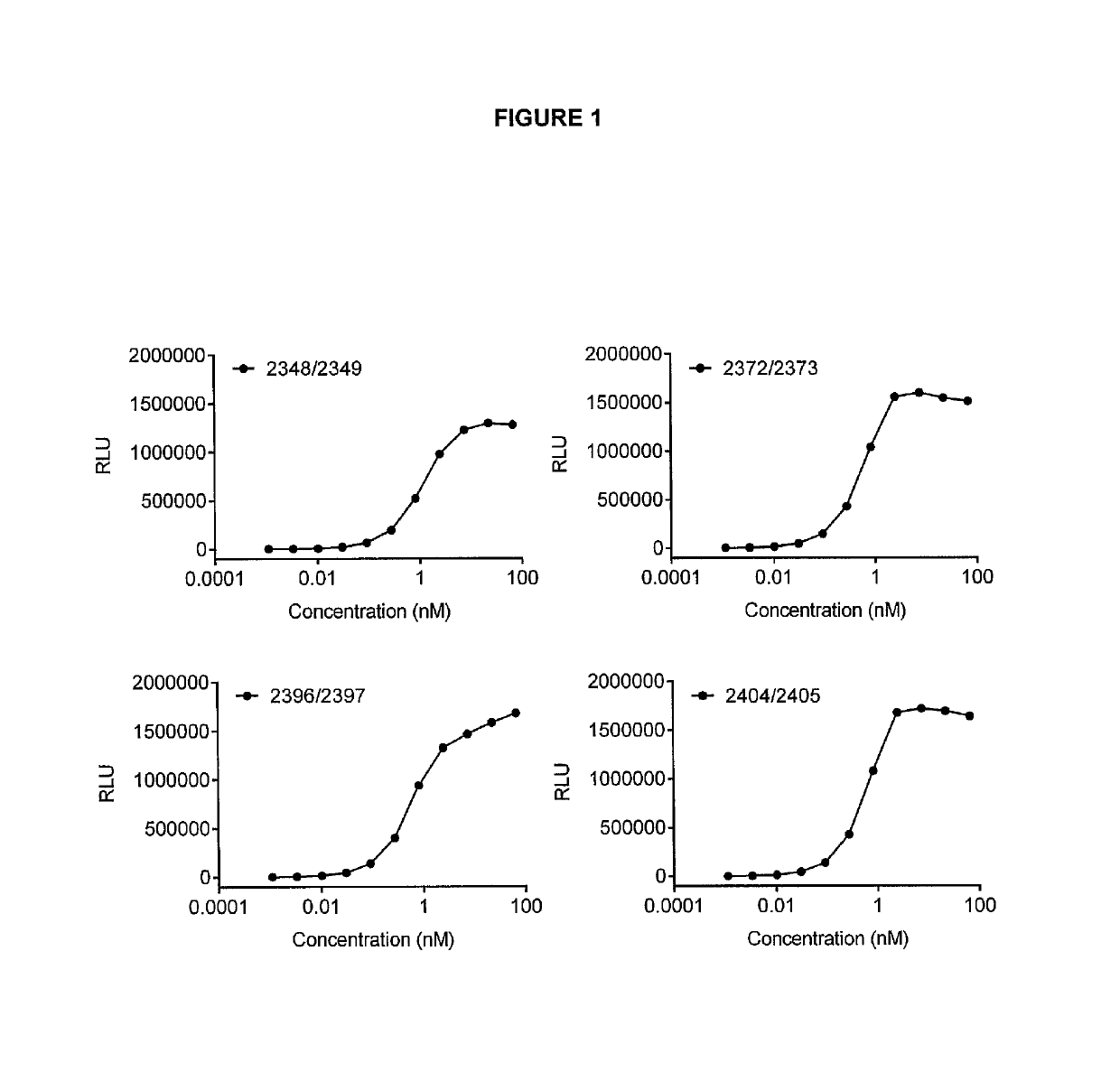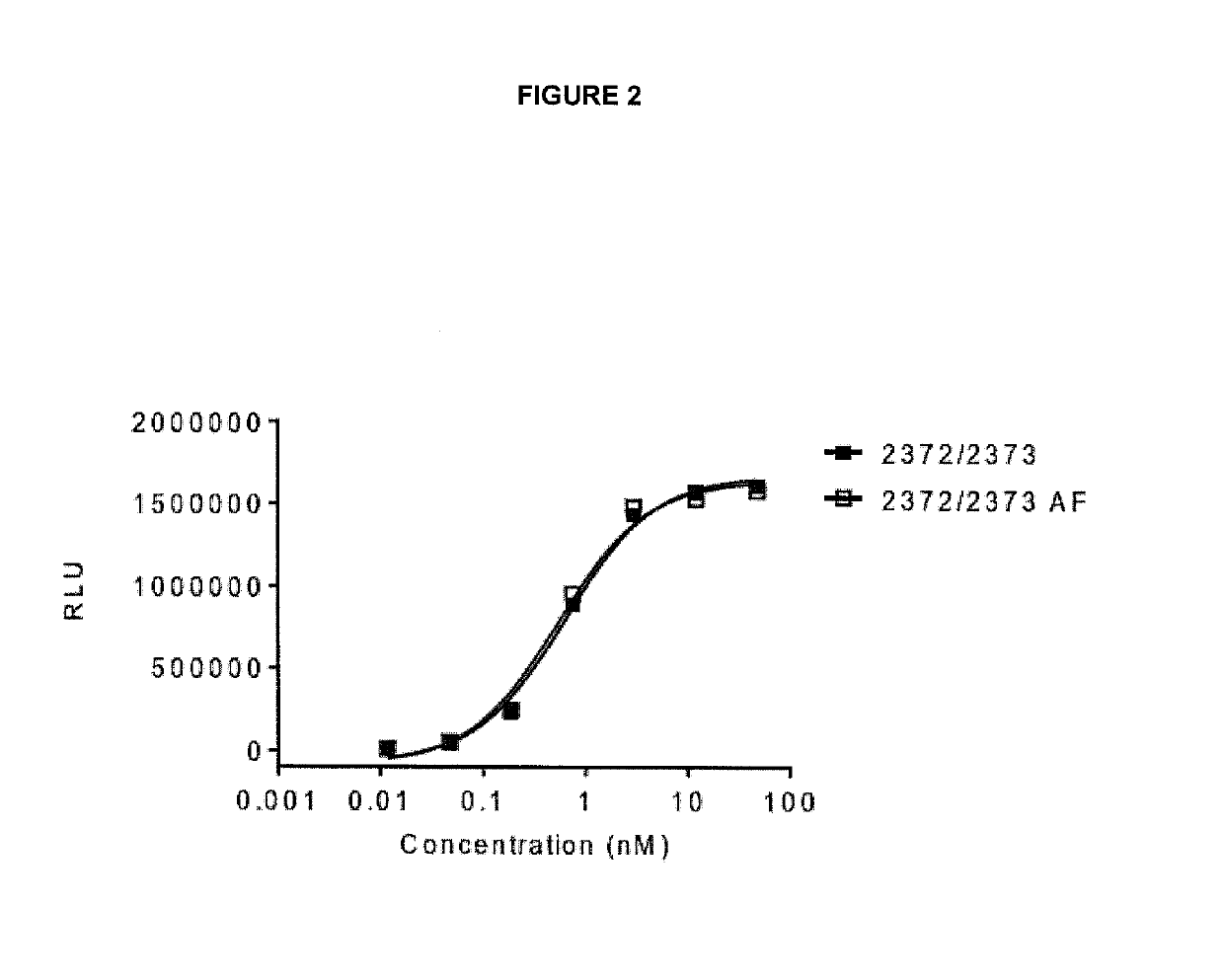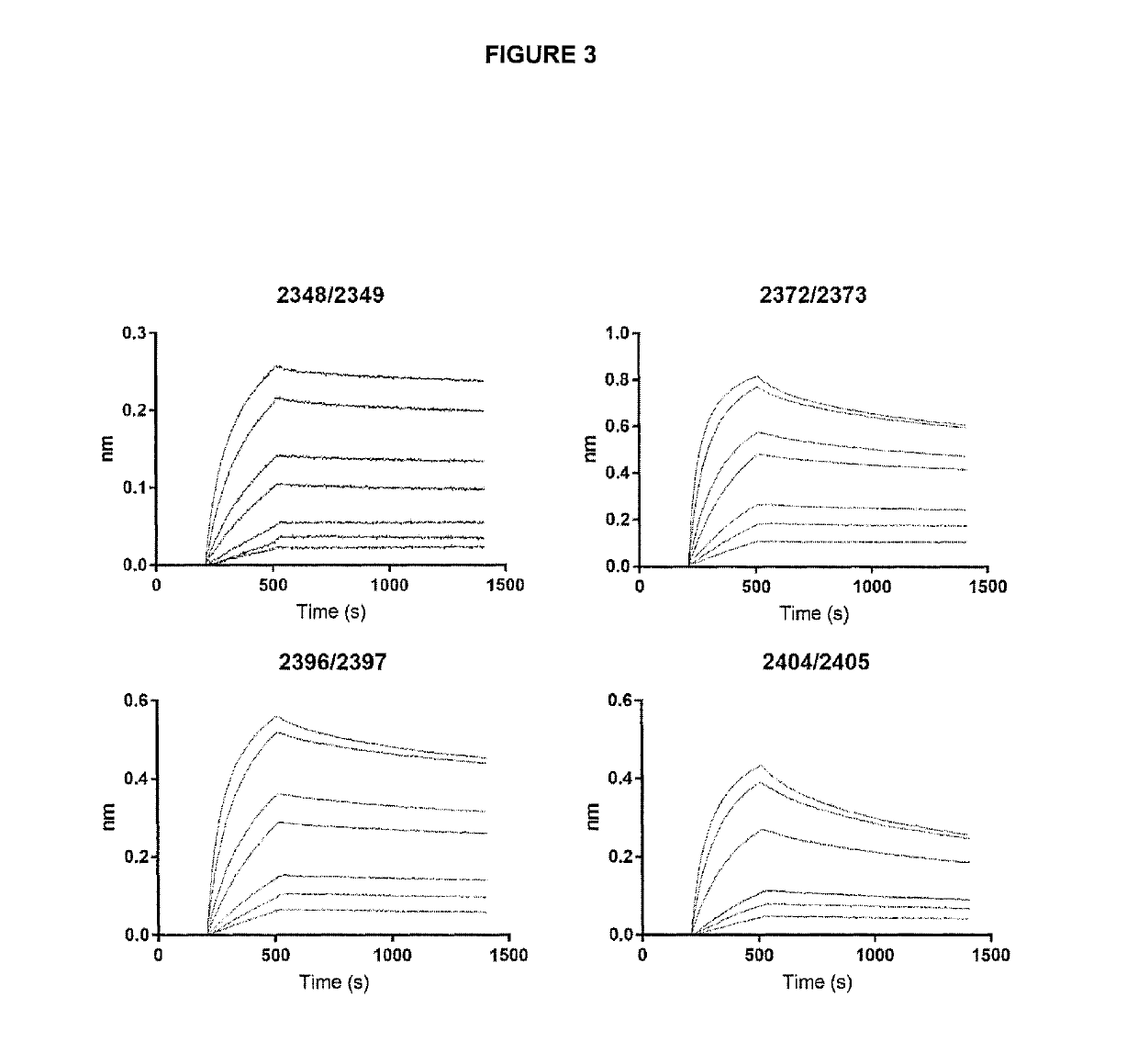Bispecific Polypeptides to GITR and CTLA-4
a polypeptide, bispecific technology, applied in the direction of antibody ingredients, antibody mimetics/scaffolds, immunoglobulins against cell receptors/antigens/surface determinants, etc., can solve the problems of single dose escalation study showing low efficacy or toxicity, premature deaths in the developed world, and inefficient anti-tumour response, etc., to reduce adcc and cdc, reduce complement activation, reduce binding
- Summary
- Abstract
- Description
- Claims
- Application Information
AI Technical Summary
Benefits of technology
Problems solved by technology
Method used
Image
Examples
example 1
A of Bispecific Antibodies GITR / CTLA-4
Material and Methods
[0356]ELISA plates were coated with GITR-hFc (0.5 ug / ml) 50 ul / well (R&D Systems, #689-GR). The plates were then washed 3 times with PBST (PBS+0.05% polysorbate 20) and blocked with PBST and 1% BSA for 1 h at room temperature. After 3 washes with PBST, the bispecific antibodies were added at different concentrations (highest concentration 66.7 nM) and incubated for 1 h at room temperature. The plates were washed as above and 0.1 μg / ml biotinylated CTLA-4-mFc (Ancell, #501-030) was added and incubated for 1 h at room temperature. After three washes with PBST, HRP-labeled streptavidin was added and incubated for 1 h at room temperature. The plates were washed 6 times with PBST and SuperSignal Pico Luminescent substrate (Thermo Scientific, #37069) was added according to the manufacturer's protocol and the luminescence was measured in a Fluorostar Optima (BMG labtech).
Results and Conclusions
[0357]The bispecific antibodies can bin...
example 2
of Bispecific Antibody Interactions with GITR
Material and Methods
[0358]Kinetic measurements were performed using the Octet RED96 platform equipped with AR2G (Amine Reactive 2nd Gen) sensor tips (ForteBio). Human GITR (Acro Biosystems, #GIR-H5228) was coupled to the biosensor surface in 10 mM sodium acetate (pH 5.0) using standard amine coupling with 20 mM 1-ethyl-3-(3-dimethylaminopropyl)carbodiimide hydrochloride (EDC), 10 mM N-hydroxysuccinimide (NHS), and 1 M ethanolamine-HCl (pH 8.5). Bispecific antibodies were diluted in 1× Kinetics Buffer (ForteBio) to 80 nM, 40 nM, 20 nM, 10 nM, 5 nM, 2.5 nM and 1.25 nM. Binding kinetics was studied in 1× Kinetics buffer where association was allowed for 300 sec followed by dissociation for 900 sec. Sensor tips were regenerated using 10 mM glycine, pH 1.7. Data generated was referenced by subtracting a parallel buffer blank, the baseline was aligned with the y-axis, inter-step correlation by alignment against dissociation was performed and th...
example 3
of the Interaction of Bispecific Antibodies with CTLA-4
Material and Methods
[0360]Kinetic measurements were performed using the Octet RED96 platform equipped with Anti-hIgG Fc Capture (AHC) sensor tips (ForteBio). Bispecific antibodies were diluted to 2 μg / ml in 1× Kinetics Buffer (ForteBio) and loaded to sensors tips for 300 seconds. The immobilized bispecific antibodies were then assayed against 4 2-fold dilutions of human CTLA-4 (ACRO Biosystems, #CT4-H5229). Binding kinetics was studied in 1× Kinetics buffer where association was allowed for 180 sec followed by dissociation for 600 sec. Sensor tips were regenerated using 10 mM glycine, pH 1.7. Data generated was referenced by subtracting a parallel buffer blank, the baseline was aligned with the y-axis, inter-step correlation by alignment against dissociation was performed and the data was smoothed by a Savitzky-Golay filter in the data analysis software (v. 9.0.0.14). The processed data was fitted using a 1:1 Langmuir binding mo...
PUM
| Property | Measurement | Unit |
|---|---|---|
| pH | aaaaa | aaaaa |
| pH | aaaaa | aaaaa |
| affinity | aaaaa | aaaaa |
Abstract
Description
Claims
Application Information
 Login to View More
Login to View More - R&D
- Intellectual Property
- Life Sciences
- Materials
- Tech Scout
- Unparalleled Data Quality
- Higher Quality Content
- 60% Fewer Hallucinations
Browse by: Latest US Patents, China's latest patents, Technical Efficacy Thesaurus, Application Domain, Technology Topic, Popular Technical Reports.
© 2025 PatSnap. All rights reserved.Legal|Privacy policy|Modern Slavery Act Transparency Statement|Sitemap|About US| Contact US: help@patsnap.com



